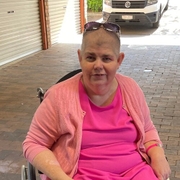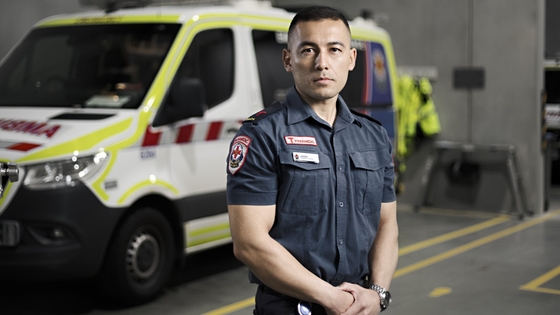
Emily’s fight for life after an abdominal aortic aneurysm and aortic dissection
A sudden collapse leads to a life-changing diagnosis
On September 4, 2015, Emily Benham felt an instinctive need to be outside and among people. Thankfully, she followed that intuition.
“I went to my friend’s shop and collapsed. I turned purple and began to go into cardiac arrest,” Emily recalls. “It felt like my body was being split in two, which I later found out was due to an abdominal aortic aneurysm (AAA) and an aortic dissection.”
Abdominal aortic aneurysm
An abdominal aortic aneurysm (AAA) is an enlargement or bulging of the abdominal aorta, the section of the aorta that runs through the abdomen. This condition usually occurs due to a weakening of the aortic wall, leading to a balloon-like swelling of the vessel. Often asymptomatic, AAAs can be discovered incidentally during medical imaging for unrelated conditions.
Aortic dissection
An aortic dissection, on the other hand, is a medical emergency by a tear in the inner layer of the aorta. Blood enters the tear, causing the layers of the aorta to separate. This is extremely serious and can result in reduced blood flow to vital organs, rupture, and other complications.
A second cardiac arrest and stroke
After waking up from CPR, Emily wanted to go home. “I wanted to speak but couldn’t,” she said. Difficulty speaking is one symptom, along with pain in various parts of the body. She collapsed again in her friend’s shop, experiencing a second cardiac arrest and, as she would later learn, a second stroke.
“I don’t remember much after that,” she shared. While being rushed to the hospital, she had to wait two weeks for open-heart surgery due to severe swelling. Emily had several pre-existing health challenges that complicated her treatment.
Facing multiple health challenges
“I spent two months in the hospital and had to learn to walk and talk again, along with facing all the other challenges that follow heart surgery,” she explained.
“My recovery was complicated by other health issues, including fluid on my lung, which needed to be drained.”
Before her heart surgery, Emily had undergone treatment for bowel cancer, which resulted in the removal of part of her large intestine. In the nine months following her initial health crisis, she developed arthritis in her spine and neck, limiting her mobility, and she occasionally uses a wheelchair.
“I do try to walk, especially if I have a support worker with me. But walking ten minutes to the doctor’s feels like completing a marathon,” she said.
Despite facing numerous difficulties, Emily complains very little. Fortunately, she hasn’t experienced any recurring heart issues and hasn't needed any follow-up surgeries. Although she takes heart medications, the number has significantly decreased: “I used to take about 20 pills a day, but now it’s down to five.”
“I work with a physiotherapist to help with my heart and stroke symptoms. Other than that, I don’t have any special treatments,” she noted.
Sharing her story to help others

I feel like I’ve fought a hundred wars, but I believe that by sharing my story, I can help someone else. I didn’t realise until my heart incident that heart problems were common in my family.
Emily Benham
Cardiac arrest survivor
“A year after my event, my dad had a stroke as well, and he passed away. If I could offer any advice to someone who might be at risk, it would be to seek medical help as soon as you feel something is not right.”
You might also be interested...

Know your risk: Family history and heart disease
When you have a family history of a disease, this means a member of your family has, or had that disease.

Cancer treatments and the heart
Cancer treatments, including chemotherapy, radiotherapy, immunotherapy and hormonal therapies, can affect the heart.

Heart attack warning signs
Free heart attack warning signs education, action plans and videos to help you understand your heart and the warning signs to look out for.